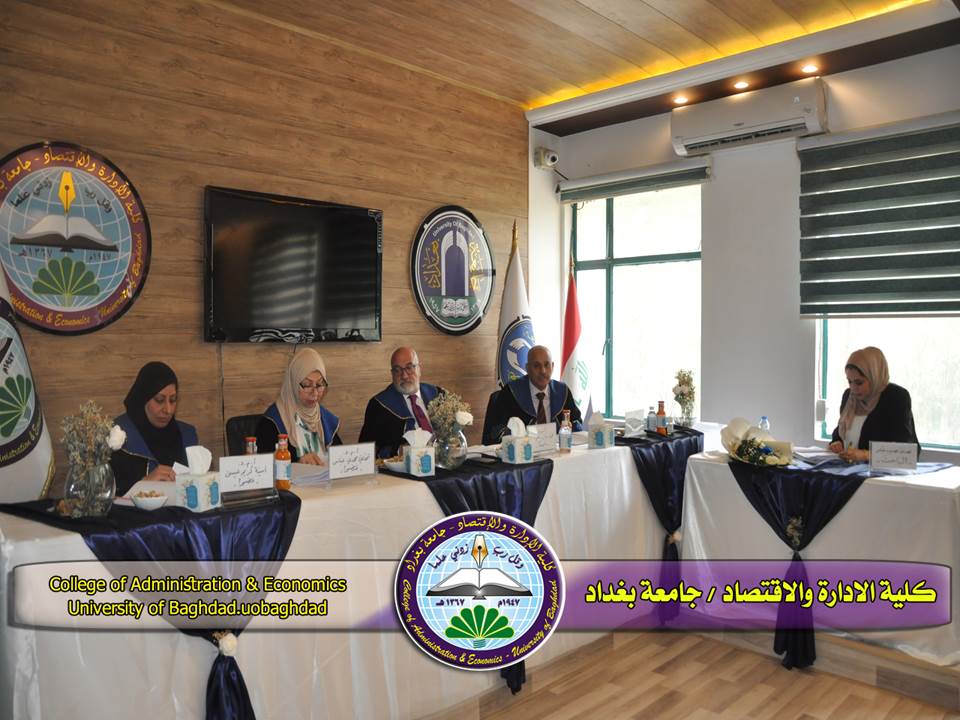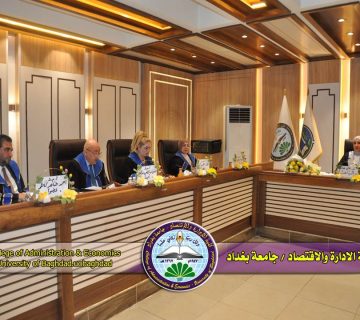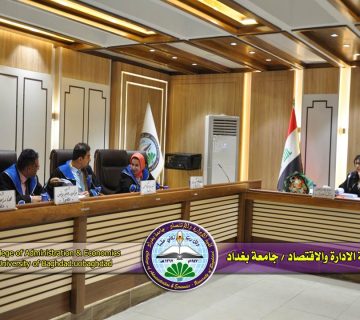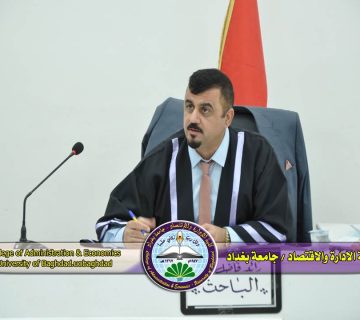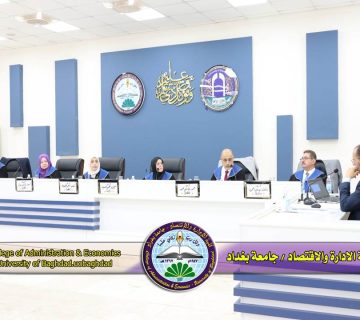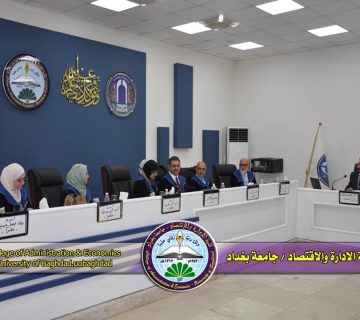The College of Administration and Economics at the University of Baghdad discussed a master’s thesis in field of Statistics by the student (Huda Hadib Abbas ) and tagged with (Comparing some Robust Estimataors of the Circular Regression Model with an Application ) , Under supervision of ( Asst. Prof. Suhail Najim Abbood)
This thesis came for studying the circular regression model for JS in the case of outliers values within the data by using some estimation methods, which are the circular Least squares method, the circular M circular estimation method, and Robust circular Least trimmed squares, the Circular Robust MM estimator, and the S Circular Robust estimator , and comparii of these robust methods with using three criteria, the median standard error (Median SE), mean of squared error (Median MSE) and mean of cosine of circular residuals (Median A(k)) using Monte-Carlo simulation experiments at pollution rates (5%, 10%, 20%, 30% , 40%, 50%) at sample sizes (n = 10, 50, 100) and the preference of the circular least squares method was reached over the robust estimation methods (CM, CMM, CTLS, S) when there is no contamination in the data and for all assumed sample sizes and at all different values for the assumed models. And the lack of preference for the least squares method in the event that there are vertical polluting values or in the lifting points, and its lack of preference increases as the percentage of pollution increases in the data and for all assumed sample sizes and for all the different values of the assumed models. The three comparison criteria (Median MSE, Median SE, A(K)) are close to the robust estimation methods when there is contamination in the vertical data and lifting points. For all assumed sample sizes and at all different values for the assumed models. And that the higher the percentage of contamination, the greater the preference for robust estimation methods for all assumed sample sizes and for all the different values of the assumed models. The robust M circular estimator method is superior to the rest of the estimation methods for contamination in the vertical variable. The circular truncated least squares method is superior to the rest of the estimation methods for pollution at high inflection points. Real eye data obtained from Jannah Laboratory was used for advanced diagnostic examinations of ophthalmology using an OCT machine for 3D tomography, which images were taken of the back of the eyes of (100) patients. And the two variables that represent the studied data are the independent variable (u) which represents the angle in radians, which measures the posterior curvature of the cornea resulting from the intersection of the geometric axis of the eye (horizontal line) with the line made between the nasal and temporal sclera (vertical line). So that when we draw the radius to the posterior surface of the cornea with lengths ranging from [3.49, 3.51] mm, the angle extended by the radius is the posterior curvature of the cornea. Thus, it outperformed the rest of the estimation methods in the fit of the circular regression model JS to the real data.


